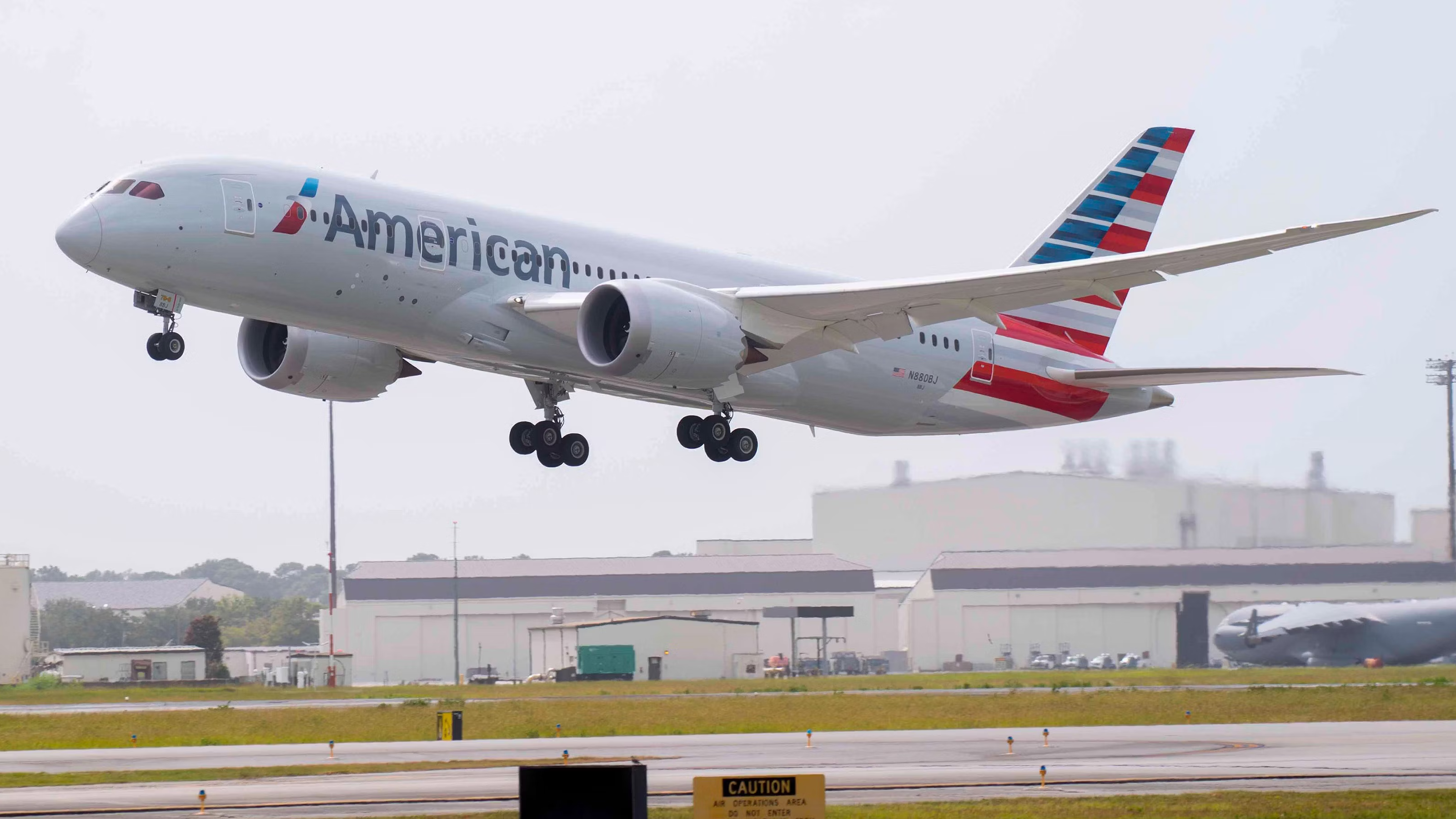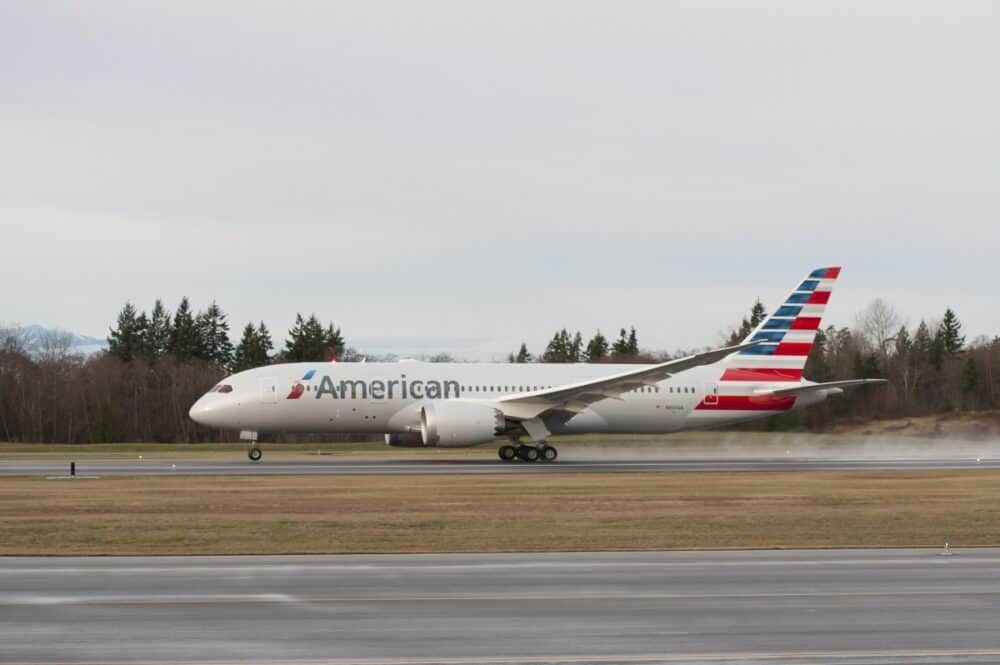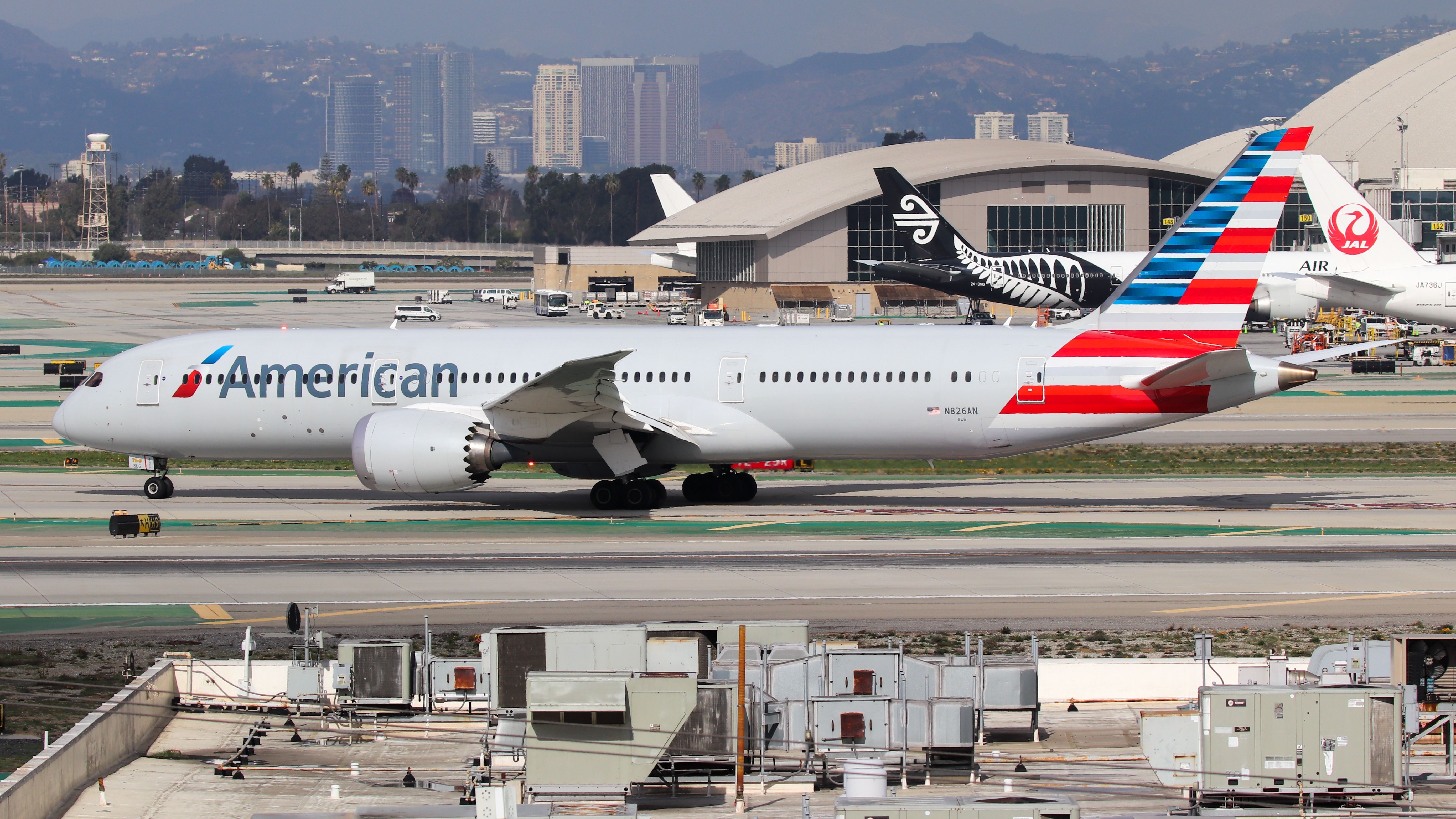Summary
- An American Airlines Boeing 787-8 Dreamliner was forced to return to Santiago due to a cabin pressurization event. The pilots safely landed the plane after dumping excess fuel.
- The incident involved American Airlines Flight 912, which was en route to Miami when the crew declared an emergency. The aircraft made an abrupt descent and returned to Santiago.
- American Airlines is the world’s largest airline by fleet size, operating 980 aircraft. They have 37 Boeing 787-8 Dreamliners in service and are also the largest operator of this aircraft model.
An American Airlines Boeing 787-8 Dreamliner (Registration N816AA), operating a scheduled service between Arturo Merino Benitez International Airport (SCL) in Santiago and Miami International Airport (MIA) in Florida, was forced to return to SCL due to a cabin pressurization event. The aircraft was flying at its cruising altitude when the flight crew performed a sudden descent while performing a return to Santiago.
The pilots dumped excess fuel before landing safely nearly 75 minutes after departure. All passengers and crew onboard the flight were safe, and no casualties were reported.
American Airlines Flight 912
On October 6, American Airlines Flight 912, operated using the carrier’s Boeing 787-8 Dreamliner (Registration N816AA, MSN 40634, Line #429), was en route to MIA when the crew declared an emergency due to the loss of cabin pressure. The flight departed the gate nearly 15 minutes behind schedule at 22:09 local time.
Photo: American Airlines
Data from the flight tracking service FlightRadar24 indicates that the aircraft completed its climb to the cruising altitude of 37,000 ft (11,275 m) and was flying at a speed of 520 knots (600 mph, 963 km/h). The altitude and speed lasted only three minutes when the pilots performed an abrupt descent to 9,000 ft (2,743 m). The aircraft descended 28,000 ft (8,535 m) in less than five minutes at an average rate of 5,600 ft (1,700 m) per minute.
The aircraft made a 180-degree turn to return to Santiago. The aircraft flew a level flight for over 30 minutes over water. The pilots dumped excess fuel to reduce the aircraft landing weight. It is noteworthy that fuel can be dumped at a much lower altitude when flying over water compared to inhabited land.
The aircraft touched down on runway 17R at SCL approximately 75 minutes after departure. All passengers and crew onboard the aircraft were safe, and no casualties were reported. What was meant to be a nearly eight-hour flight to Miami turned into a rather quick journey back to Santiago. The aircraft seemed to have remained on the ground in SCL since its return.
Photo: Bradley Caslin / Shutterstock
The aircraft in question is a 7.4-year-old jet that was delivered to American Airlines in May 2016. The aircraft is powered by two General Electric GENx engines.
The world’s largest airline by fleet size
American Airlines is the world’s largest airline by fleet size. The airline operates a jaw-dropping fleet of 980 aircraft. The airline is also the largest Boeing 787-8 operator, with 37 examples of the type in service. Typical 787-8s are configured with 234 seats, including 138 Main Cabin seats, 48 Main Cabin Extra, 28 Premium Economy (recliner seats), and 20 open suits in Business.
The airline also operates 22 of the larger Boeing 787-9 on its long-haul routes. With an average of over 500,000 daily passengers, the airline became the world’s second-largest airline by revenue in 2023.
What are your thoughts on the American Airlines Boeing 787 incident from October 6? Have you faced a similar diversion incident during your journey? Tell us in the comments section.
Source: Aviation Herald



